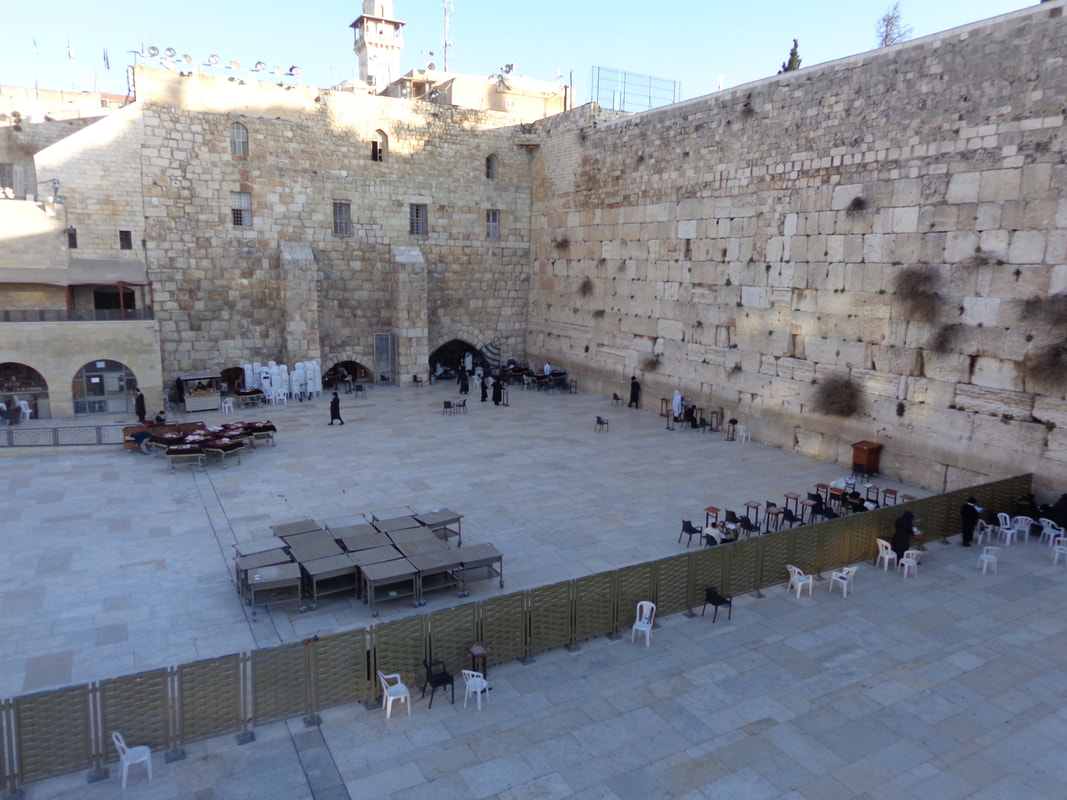|
Read: Psalm 85 (www.biblestudytools.com/nrs/psalms/85.html)
Sing: Prayer Is the Soul’s Sincere Desire, UMH 492 The holiest site in Judaism is the western retaining wall of the Temple Mount. Because the Temple was destroyed by the Romans in 70 AD this retaining wall is the closest remains to that Second Temple. Jewish Israelis call it Kotel (wall) while others sometimes call it the Wailing Wall. As we stand on the Western Wall Plaza the bottom seven layers of stone that we see were placed there during the time of Herod the Great. The stones above that were added beginning in the time of the Muslims. But below the plaza level there are eight more layers of the ancient wall. What we can see of the Western Wall is also divided into a side for men and a side for women – you can see the moveable barrier between the two sides in the photo attached (men in the upper section women in the lower). To enter the Western Wall Plaza you must first pass through a security check and a metal detector. Men and married women are required to wear some sort of head covering as they approach the Western Wall and the whole area is considered a place of worship. This is a site of pilgrimage for Jews and Christians and a place of prayer for all people. It is also a site of celebration for young Jewish people celebrating their coming of age (bar or bat Mitzvah). And many soldiers of the IDF (Israeli Defense Force) come here to dedicate themselves after they have finished their basic training. What a wonderful privilege to be able to pray in this place. I am grateful that the Jewish people and the Israeli government allow us to share this place with them. As I got closer to the wall I was given a skullcap (kippah) to wear. There were plastic chairs available to use so I took one and sat where I could lean forward with my head against the Western Wall as I prayed.
0 Comments
Leave a Reply. |
AuthorIn matters of faith, we at First United Methodist Church, Sealy put primary reliance on the Bible. In scripture, we understand that we are all God’s children; therefore, we will be a church that cares for the needs of our church and local community through prayer, deeds, inspiration, and love in the spirit of Christ. Archives
July 2020
Categories |
Location |
Our MissionCaring for the needs of our church and community through prayer, deeds, inspiration and love in the Spirit of Christ.
Sunday Worship: 10 am Adult & Children & Youth Sunday School 9 am First Kids Mother's Day Out (Tuesday & Thursday; 8am to 2pm; Ages 1-3) Rev Pat Bell, Pastor First United Methodist Church Sealy
200 Atchison Street Sealy, Texas 77474 979.885.2223 |
Contact Us |

 RSS Feed
RSS Feed